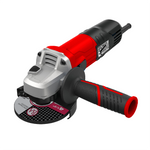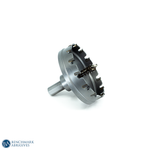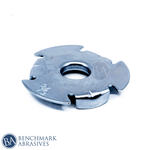
What is Metal Fabrication: Types, Benefits, and Applications

Metal fabrication is a common term, yet very few people understand how it works. This article will analyze different aspects of metal fabrication and educate readers about its working methodology. By the end of this write-up, you'll have a better idea of how this process works and how many diverse aspects it entails. But, before that, let's first understand the basics of Metal Fabrication.
What is Metal Fabrication?
Metal fabrication is a manufacturing process that shapes raw metal into structures via cutting, bending, and assembling techniques. Metal fabricators are referred to as fab shops. Fabricators and machine shops are similar, except that fab shops specialize in welding and metal shaping.
They cut, fold, or shape metal to make the complete product. Metal fabrication may make bulk items and huge quantities of custom fabricated metal products. These projects often include the design and production of customized metal components to meet the demands of a company.
Metal fabrication shapes sheet metal and other flat metals to fit certain forms. The procedure begins with sheet metal about a quarter of an inch thick or less. The metal is flexible enough at this thickness to take on many forms. Fabricators use this metal to mold the sheet into a specified form.
Types of Metal Fabrication Process
Metal manufacturing involves several procedures. The particular mix of metal or stainless steel fabrication techniques will vary depending on the object's structure, the sort of use it will get, and the material it is constructed of. Here are some options for different types of fabrication processes:
- Cutting: Cutting is the most basic operation in metal manufacturing, and it may be achieved by laser cutting, waterjet cutting, shearing, sawing, or flame cutting. This is what transforms the sheet metal into the desired size and shape. Waterjet and laser cutting are the most advanced technology available today.
- Casting: Casting is how molten metal is poured into a mold created by a die. This metal cools and solidifies, and the portion remains when the die is removed.
- Forging: When raw metal is compressed by high-pressure equipment, it allows a fabricator to bend and shape it.
- Punching: Turrets punch pre-designed patterns into metal for ornamental or functional reasons.
- Tensile tension: Tensile tension is used in drawing to pull liquid metal into a tapered die.
- Milling: A milling mechanism bores holes into metal, which might be non-circular due to the machine's nature.
- Drilling: A drill uses a circular drill bit to create holes in metal.
- Turning: The metal is placed on a rotating platform, which allows a technician to cut it radially with a tool while it rotates.
- Extrusion: Extrusion is forcing billets through a die using a ram. This extrusion procedure creates cylindrical items like pipes and electrical lines.
Read More: Difference Between Metal Fabrication and Welding
Benefits of Metal Fabrication
Following are the important benefits of metal fabrication.
1. Strength and Durability
Metal fabrication is stronger and more durable because of its resistance to pressure and heat. Metals are also resistant to pressure, corrosion, and abrasion.
2. Pliability
Sheet metal is flexible as well as strong. It may be twisted into many shapes while maintaining its strength and structural integrity. Because sheet metal is malleable, it may be used in specialized applications.
3. Adaptability
One of the most significant benefits of employing sheet metal is that the pieces are interchangeable. Rather than making the whole thing out of one material, using many metal parts allows for individual component replacement without replacing the entire assembly. So you may save money on upkeep and make improvements.
4. Durability
Metal is one of the most eco-friendly materials available. Metal is an eco-friendly natural resource. Components may be recycled and reused indefinitely.
5. Cost-effectiveness
In assessing a material's cost, its lifespan and durability must be considered. The cheapest material is not necessarily the most cost-effective alternative if it needs to be replaced or repaired often. Due to its strength and endurance, sheet metal is a cheaper option.
Industrial Applications of Metal Fabrication
Metal fabrication has many applications and purposes; however, many people associate it with heavy machinery and industrial applications such as mining and oil drilling. However, the applications of metal manufacturing are much more diverse.
The following are some of the sectors that may profit from metal manufacturing. Metal manufactured goods are required in every sector. Metal fabrication is extensively employed in many industries, including
- Mining
- Construction and architecture
- Manufacturing
- Shipbuilding
- Automotive
- Aerospace, and energy
- Medical
- Transportation
- Landscaping and so on
There are numerous aspects to consider and various processes employed in Metal fabricators which are vital actors in every sector. Each project requires a high level of ability and experience. Metal fabrication is turning a raw material, usually metal sheets, into a completed product. Metal fabrication is used in almost every sector to make tools, design goods, etc. Thus, it is a vast business that supports the global economy.
Read More:



































































